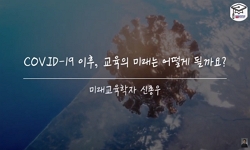นับตั้งแต่เชื้อไวรัสโคโรนาสายพันธุ์ใหม่แพร่ระบาด แต่ละประเทศได้จัดการกับการแพร่ระบาด...
http://chineseinput.net/에서 pinyin(병음)방식으로 중국어를 변환할 수 있습니다.
변환된 중국어를 복사하여 사용하시면 됩니다.
- 中文 을 입력하시려면 zhongwen을 입력하시고 space를누르시면됩니다.
- 北京 을 입력하시려면 beijing을 입력하시고 space를 누르시면 됩니다.

วิเคราะห์ระบบนโยบายสาธารณะต่อการตอบสนองการแพร่ระบาดของโรคติดเชื้อไวรัสโคโรนาสายพันธุ์ใหม่ 2019 ในประเทศไทย = An Analysis of Public Policy System Responding to the COVID-19 Pandemic in Thailand
한글로보기https://www.riss.kr/link?id=A108544704
- 저자
- 발행기관
- 학술지명
- 권호사항
-
발행연도
2023
-
작성언어
-
- 주제어
-
KDC
300
-
등재정보
KCI등재
-
자료형태
학술저널
- 발행기관 URL
-
수록면
227-275(49쪽)
- 제공처
-
0
상세조회 -
0
다운로드
부가정보
다국어 초록 (Multilingual Abstract)
จากการศึกษาและวิเคราะห์พบว่า นโยบายเกี่ยวกับโรคติดเชื้อไวรัสโคโรนาสายพันธุ์ใหม่ 2019 ซึ่งถูกวางแผน ตัดสินใจ และบังคับใช้โดยรัฐบาลไทยนั้น มีความครอบคลุมหลายด้าน เช่น ด้านการควบคุมคนเข้าเมือง ด้านการจัดหาอุปกรณ์ป้องกันทางการแพทย์ ด้านการสื่อสาร ด้านการต่างประเทศ ด้านการป้องกันการระบาด และด้านการชดใช้เยียวยา เมื่อพิจารณาในเชิงระบบย่อย พบว่าแต่ละระบบย่อยของนโยบายเกี่ยวกับโรคติดเชื้อไวรัสโคโรนาสายพันธุ์ใหม่ 2019 ตอบสนองต่อการแพร่ระบาดได้ค่อนข้างดีและครอบคลุม เพราะมีการจัดตั้งศูนย์บริหารสถานการณ์การแพร่ระบาดของโรคติดเชื้อไวรัสโคโรนา 2019 (ศบค.) นอกจากนี้ หน่วยงานอื่น ๆ เช่น ธนาคารแห่งประเทศไทย กระทรวงสาธารณสุข และกระทรวงศึกษาธิการ ก็บังคับใช้นโยบายเกี่ยวกับโรคติดเชื้อไวรัสโคโรนาสายพันธุ์ใหม่ 2019 ที่เกี่ยวข้องกับความรับผิดชอบของตนได้ดี เมื่อพิจารณาในเชิงปัจจัยแวดล้อมของนโยบายสาธารณะ พบว่ามีหลายปัจจัยที่ส่งผลต่อการบังคับใช้นโยบายเกี่ยวกับโรคติดเชื้อไวรัสโคโรนาสายพันธุ์ใหม่ 2019 อย่างมีประสิทธิภาพเช่น นายกรัฐมนตรี (ปัจจัยแวดล้อมเชิงการเมือง) คุณภาพของประชากรไทยและความแพร่หลายของเทคโนโลยีในประเทศไทย (ปัจจัยแวดล้อมเชิงสังคมวิทยาและวัฒนธรรม)และมาตรการป้องกันโรคติดเชื้อไวรัสโคโรนาสายพันธุ์ใหม่ 2019 ที่เป็นสากล (ปัจจัยแวดล้อมเชิงระหว่างประเทศ) เมื่อพิจารณาในเชิงเครื่องมือสำหรับนโยบายสาธารณะพบว่ามีหลายเครื่องมือที่ถูกนำมาใช้ในการบังคับใช้นโยบายเกี่ยวกับโรคติดเชื้อไวรัสโคโรนาสายพันธุ์ใหม่ 2019 อย่างเต็มที่ อาทิ เครื่องมือเชิงอาสา เช่น ครอบครัว ชุมชน และองค์กรอาสาสมัคร เครื่องมือเชิงบังคับ เช่น กฎระเบียบ และหน่วยงานภาครัฐ และเครื่องมือเชิงผสม เช่น การให้ข้อมูลแก่ประชาชนผ่านรายงานสถานการณ์โรคติดเชื้อไวรัสโคโรนาสายพันธุ์ใหม่ 2019 รายวัน การเน้นย้ำมาตรการชะลอการระบาดของโรคติดเชื้อไวรัสโคโรนา 2019 (มาตรการ D-M-H-T-T) การสนับสนุนทุนวิจัยวัคซีน และการให้สิทธิประโยชน์ทางภาษี
อย่างไรก็ดี มีข้อแนะนำบางประการที่อาจพัฒนานโยบายเกี่ยวกับโรคติดเชื้อไวรัสโคโรนาสายพันธุ์ใหม่ 2019 ของประเทศไทยให้ดีขึ้น เช่น การบูรณาการบางภาคส่วนของสังคมและการใช้การดำเนินการแบบมีส่วนร่วมในการรับฟังความคิดเห็นของประชาชนเพื่อสร้างนโยบายเกี่ยวกับโรคติดเชื้อไวรัสโคโรนาสายพันธุ์ใหม่ 2019 ได้อย่างเหมาะสมการสร้างมาตรฐานการบังคับใช้นโยบาย การสร้างเครื่องมือรับเสียงสะท้อนจากประชาชนและการป้องกันการเบี่ยงเบนนโยบายในด้านเศรษฐกิจและการศึกษา
นับตั้งแต่เชื้อไวรัสโคโรนาสายพันธุ์ใหม่แพร่ระบาด แต่ละประเทศได้จัดการกับการแพร่ระบาดนี้โดยใช้นโยบายต่าง ๆ ตั้งแต่ระดับเบา เช่น การสวมหน้ากากอนามัย ไปจนถึงระดับเข้มงวด เช่น การปิดเมือง เมื่อรัฐบาลของแต่ละประเทศรวมถึงประเทศไทยได้ออกนโยบายต่าง ๆ เกี่ยวกับโรคติดเชื้อไวรัสโคโรนาสายพันธุ์ใหม่ 2019 มาบังคับใช้ เราสามารถทำความเข้าใจนโยบายเหล่านั้นได้ด้วยการศึกษาและวิเคราะห์นโยบายอย่างเป็นระบบ บทความนี้จึงมุ่งที่จะศึกษาว่า ระบบนโยบายสาธารณะของประเทศไทยตอบสนองต่อการแพร่ระบาดของโรคติดเชื้อไวรัสโคโรนาสายพันธุ์ใหม่ 2019 อย่างไร และมีประสิทธิภาพหรือไม่
จากการศึกษาและวิเคราะห์พบว่า นโยบายเกี่ยวกับโรคติดเชื้อไวรัสโคโรนาสายพันธุ์ใหม่ 2019 ซึ่งถูกวางแผน ตัดสินใจ และบังคับใช้โดยรัฐบาลไทยนั้น มีความครอบคลุมหลายด้าน เช่น ด้านการควบคุมคนเข้าเมือง ด้านการจัดหาอุปกรณ์ป้องกันทางการแพทย์ ด้านการสื่อสาร ด้านการต่างประเทศ ด้านการป้องกันการระบาด และด้านการชดใช้เยียวยา เมื่อพิจารณาในเชิงระบบย่อย พบว่าแต่ละระบบย่อยของนโยบายเกี่ยวกับโรคติดเชื้อไวรัสโคโรนาสายพันธุ์ใหม่ 2019 ตอบสนองต่อการแพร่ระบาดได้ค่อนข้างดีและครอบคลุม เพราะมีการจัดตั้งศูนย์บริหารสถานการณ์การแพร่ระบาดของโรคติดเชื้อไวรัสโคโรนา 2019 (ศบค.) นอกจากนี้ หน่วยงานอื่น ๆ เช่น ธนาคารแห่งประเทศไทย กระทรวงสาธารณสุข และกระทรวงศึกษาธิการ ก็บังคับใช้นโยบายเกี่ยวกับโรคติดเชื้อไวรัสโคโรนาสายพันธุ์ใหม่ 2019 ที่เกี่ยวข้องกับความรับผิดชอบของตนได้ดี เมื่อพิจารณาในเชิงปัจจัยแวดล้อมของนโยบายสาธารณะ พบว่ามีหลายปัจจัยที่ส่งผลต่อการบังคับใช้นโยบายเกี่ยวกับโรคติดเชื้อไวรัสโคโรนาสายพันธุ์ใหม่ 2019 อย่างมีประสิทธิภาพเช่น นายกรัฐมนตรี (ปัจจัยแวดล้อมเชิงการเมือง) คุณภาพของประชากรไทยและความแพร่หลายของเทคโนโลยีในประเทศไทย (ปัจจัยแวดล้อมเชิงสังคมวิทยาและวัฒนธรรม)และมาตรการป้องกันโรคติดเชื้อไวรัสโคโรนาสายพันธุ์ใหม่ 2019 ที่เป็นสากล (ปัจจัยแวดล้อมเชิงระหว่างประเทศ) เมื่อพิจารณาในเชิงเครื่องมือสำหรับนโยบายสาธารณะพบว่ามีหลายเครื่องมือที่ถูกนำมาใช้ในการบังคับใช้นโยบายเกี่ยวกับโรคติดเชื้อไวรัสโคโรนาสายพันธุ์ใหม่ 2019 อย่างเต็มที่ อาทิ เครื่องมือเชิงอาสา เช่น ครอบครัว ชุมชน และองค์กรอาสาสมัคร เครื่องมือเชิงบังคับ เช่น กฎระเบียบ และหน่วยงานภาครัฐ และเครื่องมือเชิงผสม เช่น การให้ข้อมูลแก่ประชาชนผ่านรายงานสถานการณ์โรคติดเชื้อไวรัสโคโรนาสายพันธุ์ใหม่ 2019 รายวัน การเน้นย้ำมาตรการชะลอการระบาดของโรคติดเชื้อไวรัสโคโรนา 2019 (มาตรการ D-M-H-T-T) การสนับสนุนทุนวิจัยวัคซีน และการให้สิทธิประโยชน์ทางภาษี
อย่างไรก็ดี มีข้อแนะนำบางประการที่อาจพัฒนานโยบายเกี่ยวกับโรคติดเชื้อไวรัสโคโรนาสายพันธุ์ใหม่ 2019 ของประเทศไทยให้ดีขึ้น เช่น การบูรณาการบางภาคส่วนของสังคมและการใช้การดำเนินการแบบมีส่วนร่วมในการรับฟังความคิดเห็นของประชาชนเพื่อสร้างนโยบายเกี่ยวกับโรคติดเชื้อไวรัสโคโรนาสายพันธุ์ใหม่ 2019 ได้อย่างเหมาะสมการสร้างมาตรฐานการบังคับใช้นโยบาย การสร้างเครื่องมือรับเสียงสะท้อนจากประชาชนและการป้องกันการเบี่ยงเบนนโยบายในด้านเศรษฐกิจและการศึกษา
다국어 초록 (Multilingual Abstract)
This paper found that Thailand’s COVID-19 policies, which are mainly planned, decided, and implemented by the Thai government, cover many aspects such as immigration control, protective medical supplies procurement, communication, foreign affairs, epidemic prevention, remedy, and recovery. In terms of public policy subsystems, each subsystem of the Thai COVID-19 policies responds to the outbreak quite well and comprehensively because of the establishment of the Coronavirus Disease 2019 Epidemic Administrative Center (CDC). Furthermore, other agencies such as the Bank of Thailand, Ministry of Public Health, and Ministry of Education also implement the COVID-19 policies related to their responsibilities as well as they can. In terms of the environment of public policy, there are several factors influencing the successful implementation of the Thai COVID-19 policies, for example, the Prime Minister (political environment), the quality of the Thai population and technology popularization in Thailand (socio-cultural environment), and universal COVID-19 prevention measures (international environment). In terms of tools for public policy, there are a lot of tools fully employed in implementing the Thai COVID-19 policies like voluntary tools such as families, communities, and voluntary organizations, as well as mandatory tools like regulations, public institutions, and mixing tools like the daily report of COVID-19 situation (information), “D-M-H-T-T” re-emphasis (dissuasion), vaccine research grants, and tax incentives (subsidy).
Nevertheless, there are certain recommendations to better advance Thai COVID-19 policies such as integrating some parts of the society and using participatory practices to gain citizens’ perspectives to create appropriate COVID-19 policies, as well as inventing implementation standards and measures for getting feedback and preventing policy deviations in economic and educational aspects.
From the time the novel coronavirus spread, each country has to tackle this pandemic by employing different policies from soft, e.g., wearing a mask, to even draconian, i.e., city lockdown. When the national government of each state, including Thailan...
From the time the novel coronavirus spread, each country has to tackle this pandemic by employing different policies from soft, e.g., wearing a mask, to even draconian, i.e., city lockdown. When the national government of each state, including Thailand, issued different COVID-19 policies, we can better understand those policies by studying and analyzing them systematically. This article, therefore, aims to examine how the public policy system of Thailand responds to the COVID-19 pandemic and how efficient it is.
This paper found that Thailand’s COVID-19 policies, which are mainly planned, decided, and implemented by the Thai government, cover many aspects such as immigration control, protective medical supplies procurement, communication, foreign affairs, epidemic prevention, remedy, and recovery. In terms of public policy subsystems, each subsystem of the Thai COVID-19 policies responds to the outbreak quite well and comprehensively because of the establishment of the Coronavirus Disease 2019 Epidemic Administrative Center (CDC). Furthermore, other agencies such as the Bank of Thailand, Ministry of Public Health, and Ministry of Education also implement the COVID-19 policies related to their responsibilities as well as they can. In terms of the environment of public policy, there are several factors influencing the successful implementation of the Thai COVID-19 policies, for example, the Prime Minister (political environment), the quality of the Thai population and technology popularization in Thailand (socio-cultural environment), and universal COVID-19 prevention measures (international environment). In terms of tools for public policy, there are a lot of tools fully employed in implementing the Thai COVID-19 policies like voluntary tools such as families, communities, and voluntary organizations, as well as mandatory tools like regulations, public institutions, and mixing tools like the daily report of COVID-19 situation (information), “D-M-H-T-T” re-emphasis (dissuasion), vaccine research grants, and tax incentives (subsidy).
Nevertheless, there are certain recommendations to better advance Thai COVID-19 policies such as integrating some parts of the society and using participatory practices to gain citizens’ perspectives to create appropriate COVID-19 policies, as well as inventing implementation standards and measures for getting feedback and preventing policy deviations in economic and educational aspects.
동일학술지(권/호) 다른 논문
-
- 한국태국학회
- ( Junsu Seo )
- 2023
- KCI등재
-
- 한국태국학회
- 윤경원 ( Yoon Kyung Won )
- 2023
- KCI등재
-
불교와 이슬람의 불균형 공존 : 태국 쁘라윳 짠오차 정부의 사례를 중심으로
- 한국태국학회
- 옹지인 ( Ong Ji-in )
- 2023
- KCI등재
-
- 한국태국학회
- 서경교 ( Seo Kyoungkyo )
- 2023
- KCI등재




 KCI
KCI KISS
KISS


